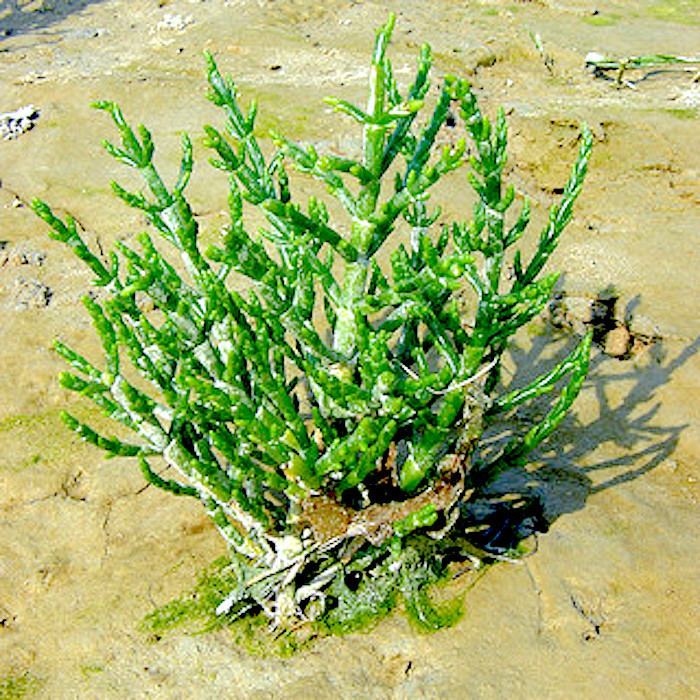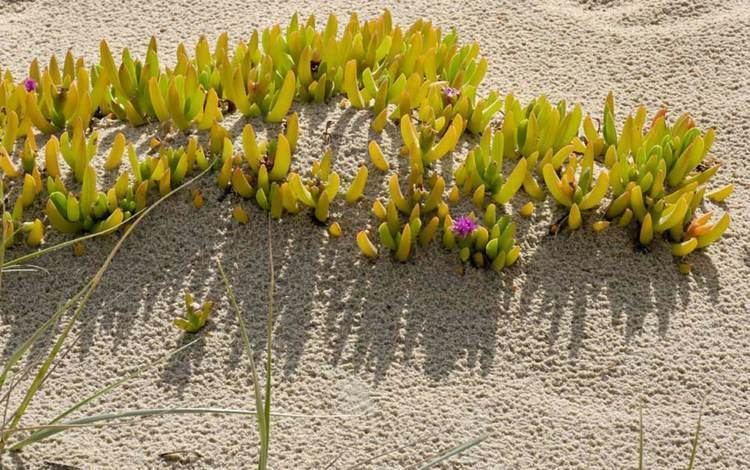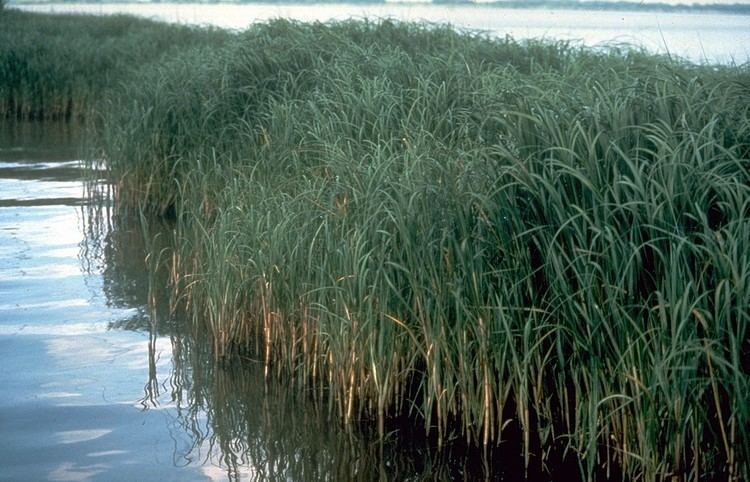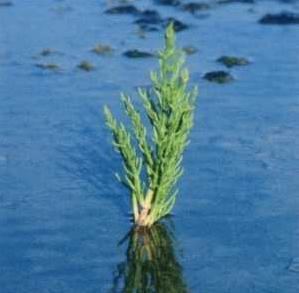 | ||
Representative species Barley, Spartina alterniflora, Date palm, Salicornia bigelovii, Old switch panic grass | ||
Halophytes 2016
A halophyte is a plant that grows in waters of high salinity, coming into contact with saline water through its roots or by salt spray, such as in saline semi-deserts, mangrove swamps, marshes and sloughs and seashores. An example of a halophyte is the salt marsh grass Spartina alterniflora (smooth cordgrass). Relatively few plant species are halophytes—perhaps only 2% of all plant species.
Contents
The large majority of plant species are glycophytes, which are not salt-tolerant and are damaged fairly easily by high salinity.

Setalg halophyte plants
Salt tolerance

One quantitative measure of salt tolerance (halotolerance) is the total dissolved solids in irrigation water that a plant can tolerate. Seawater typically contains 40 grams per litre (g/l) of dissolved salts (mostly sodium chloride). Beans and rice can tolerate about 1–3 g/l, and are considered glycophytes (as are most crop plants). At the other extreme, Salicornia bigelovii (dwarf glasswort) grows well at 70 g/l of dissolved solids, and is a promising halophyte for use as a crop. Plants such as barley (Hordeum vulgare) and the date palm (Phoenix dactylifera) can tolerate about 5 g/l, and can be considered as marginal halophytes.
Adaptation to saline environments by halophytes may take the form of salt tolerance or salt avoidance. Plants that avoid the effects of high salt even though they live in a saline environment may be referred to as facultative halophytes rather than 'true', or obligatory, halophytes.

For example, a short-lived plant species that completes its reproductive life cycle during periods (such as a rainy season) when the salt concentration is low would be avoiding salt rather than tolerating it. Or a plant species may maintain a 'normal' internal salt concentration by excreting excess salts through its leaves, by way of a hydathode, or by concentrating salts in leaves that later die and drop off. In an effort to improve agricultural production in regions where crops are exposed to salinity, research is focused on improving understanding of the various mechanisms whereby plants respond to salinity stress, so that more robust crop halophytes may be developed. Adaptive responses to salinity stress have been identified at molecular, cellular, metabolic, and physiological levels.
Examples
Some halophytes are:
As biofuel
Some halophytes are being studied for use as "3rd-generation" biofuel precursors. Halophytes such as Salicornia bigelovii can be grown in harsh environments and typically do not compete with food crops for resources, making them promising sources of biodiesel or bioalcohol.
